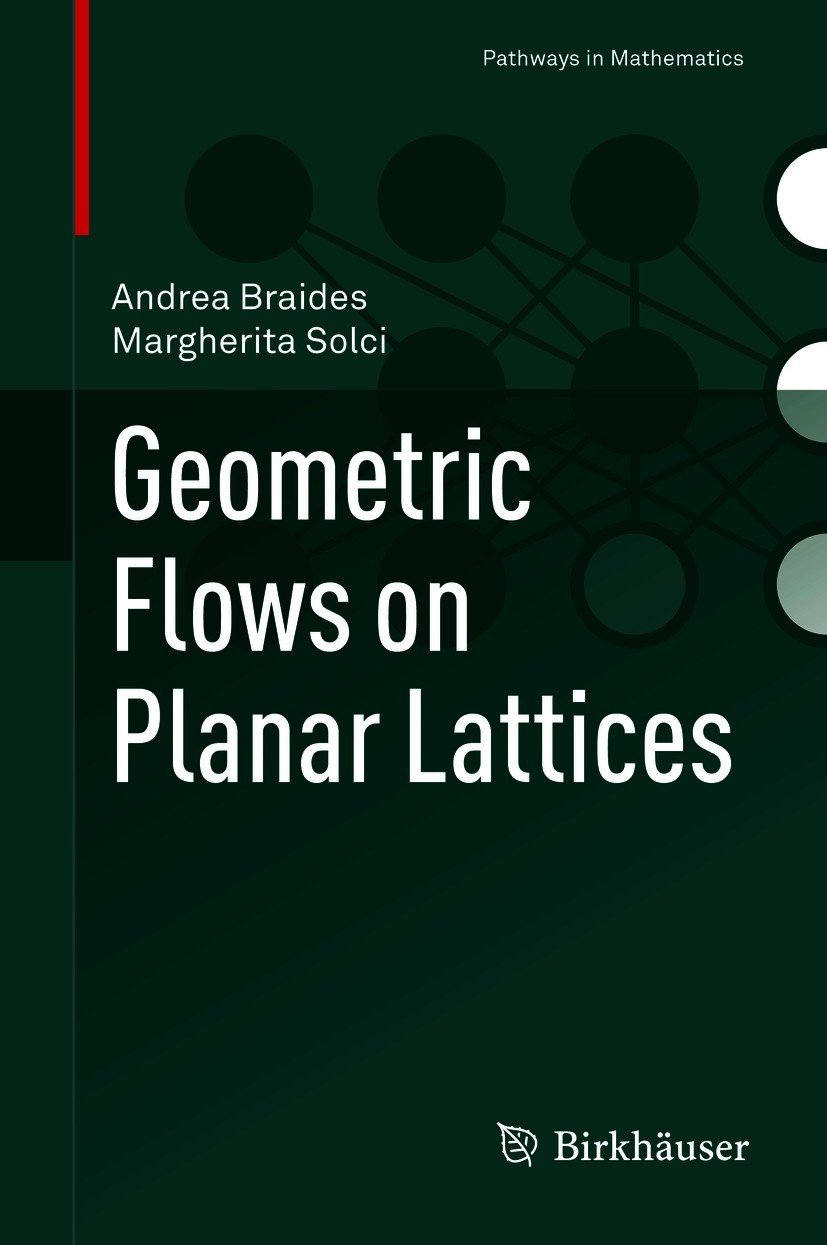| 书目名称 | Geometric Flows on Planar Lattices | | 编辑 | Andrea Braides,Margherita Solci | | 视频video | http://file.papertrans.cn/384/383510/383510.mp4 | | 概述 | Introduces important concepts in modern Applied Analysis through prototypical problems, discussed in a natural way.Advanced research topics are introduced in a stimulating and constructive fashion.Cop | | 丛书名称 | Pathways in Mathematics | | 图书封面 |  | | 描述 | This book introduces the reader to important concepts in modern applied analysis, such as homogenization, gradient flows on metric spaces, geometric evolution, Gamma-convergence tools, applications of geometric measure theory, properties of interfacial energies, etc. This is done by tackling a prototypical problem of interfacial evolution in heterogeneous media, where these concepts are introduced and elaborated in a natural and constructive way. At the same time, the analysis introduces open issues of a general and fundamental nature, at the core of important applications. The focus on two-dimensional lattices as a prototype of heterogeneous media allows visual descriptions of concepts and methods through a large amount of illustrations.. . . | | 出版日期 | Book 2021 | | 关键词 | Variational evolution; Gradient flows; Homogenization; Heterogeneous media; Geometric motions; Motion by | | 版次 | 1 | | doi | https://doi.org/10.1007/978-3-030-69917-8 | | isbn_softcover | 978-3-030-69919-2 | | isbn_ebook | 978-3-030-69917-8Series ISSN 2367-3451 Series E-ISSN 2367-346X | | issn_series | 2367-3451 | | copyright | The Editor(s) (if applicable) and The Author(s), under exclusive license to Springer Nature Switzerl |
The information of publication is updating

|
|
 |Archiver|手机版|小黑屋|
派博传思国际
( 京公网安备110108008328)
GMT+8, 2025-12-17 22:28
|Archiver|手机版|小黑屋|
派博传思国际
( 京公网安备110108008328)
GMT+8, 2025-12-17 22:28


